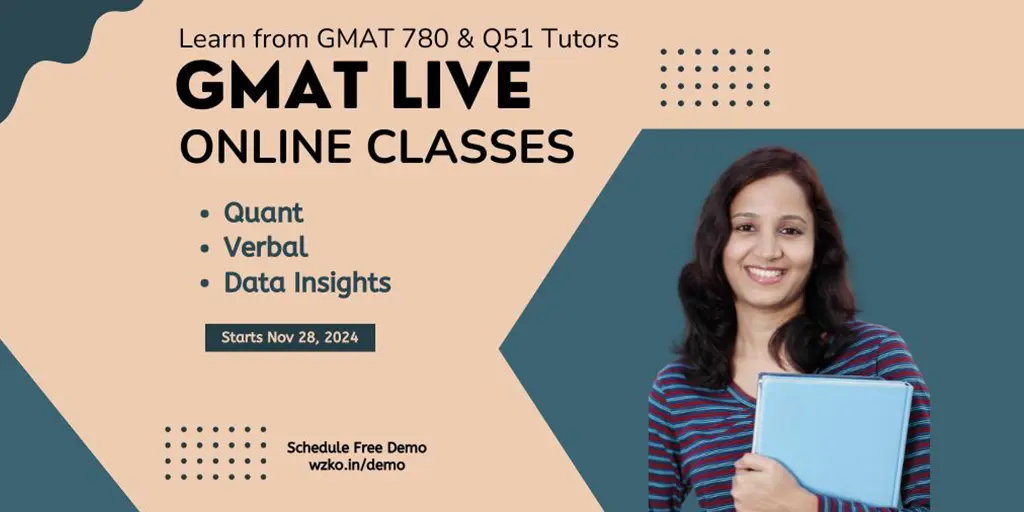
GMAT Newsletter Subscribe
Enter your email address below and subscribe to our newsletter

Enter your email address below and subscribe to our newsletter

Hello, everyone! Welcome to the first installment in our series dedicated to unraveling the mysteries of different question types within the Data Insights section. Today, we’re diving into the world of table analysis in the Data Insights section of the GMAT Focus Edition.
In the GMAT Data Insights section, you’re presented with 20 questions to answer in a brisk 45 minutes. That breaks down to about 2 minutes and 15 seconds per question. Time management is key here!
The Five Types of Questions
This section is divided into five question types:
1. Table Analysis
2. Graphical Interpretation
3. Two-Part Analysis
4. Multisource Reasoning
5. Data Sufficiency
We’re starting our journey with Table Analysis.
Table Analysis typically consists of three to four questions. Each question begins with an introduction, giving context to the data presented in tabular form. Questions will typically have three options, occasionally four options. The task here is to not pick one of the several options given but to classify ALL of the given options into one of two categories.
Classification of statements into two categories can add to the total time it takes to answer one question. But the tables can be sorted in ascending or descending order as per any column you need (and the entire table will rearrange as per your sorting, akin to using the sort feature in a spreadsheet). This handy feature allows for faster processing of data.
Introduction: Sometimes optional, it sets the stage for the data.
Data Table: The heart of the question, where you can sort columns as needed.
Question Prompt: This is where you’ll find your classification task.
Answer Options: You will classify each statement into categories such as true/false or yes/no. All options will fit into one of the two given categories.
Let’s consider an example. The table might present economic parameters for a country over several years. The question will then require you to classify statements based on this data.
| Year | GDP (in billion USD) | Unemployment rate (%) | Inflation rate (%) | Interest rate (%) |
| 2019 | 500 | 5.0 | 2.0 | 1.5 |
| 2020 | 520 | 6.0 | 1.8 | 1.3 |
| 2021 | 530 | 5.5 | 2.1 | 1.4 |
| 2022 | 550 | 5.2 | 2.2 | 1.5 |
| 2023 | 570 | 4.9 | 2.3 | 1.6 |
| True | False | |
| 🔘 | 🔘 | Annual rate of growth of GDP in 2022 is the same as that in 2023 |
| 🔘 | 🔘 | The interest rate during the 5-year period given in the table is positively correlated to the inflation rate during the corresponding period |
| 🔘 | 🔘 | The median values for 3 of the 4 parameters among the 5 years was in 2021 |
Remember, getting all parts of the question correct is crucial – there’s no room for partial credit here.

Sign up for a demo class at https://wzko.in/demo, and begin your GMAT Preparation now!https://wzko.in/demo
Attention to Detail: Be meticulous and discerning with the data. Do not make any assumptions when interpreting the given data.
Practice and Speed: Initially, focus on understanding the question type and the process of classification, not speed. With practice, speed will naturally increase.
Full Accuracy: Aim for complete accuracy in your answers. It’s better to answer fewer questions correctly than more with errors. Why? If you are careful with the first couple of options within a question but end up rushing through the last one due to time constraint, and if you make a mistake in the last one, you just lost the credit for that question.
I encourage you to try solving the question given above. Leave your answers in the comments, and we’ll review them in a future video.
In Conclusion
Slow down, understand each element, and practice diligently. Your ability to decode these questions will improve with time. Stay tuned for more insights into the other question types.
Have any questions or need more clarification? Feel free to drop your queries in the comments or contact us directly for more personalized guidance. Best of luck in your educational pursuits! 🌟📚